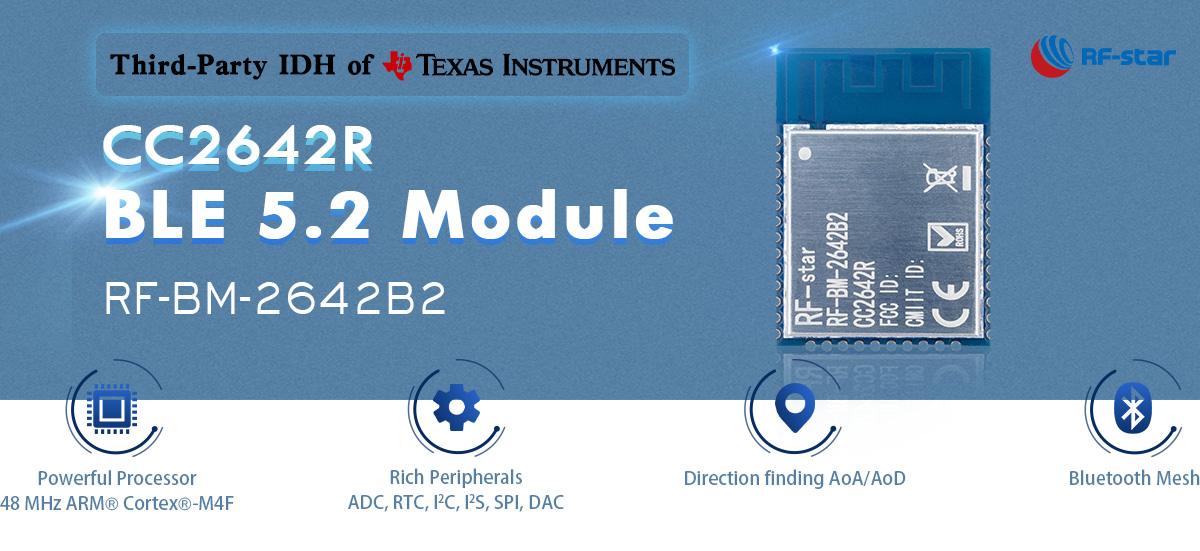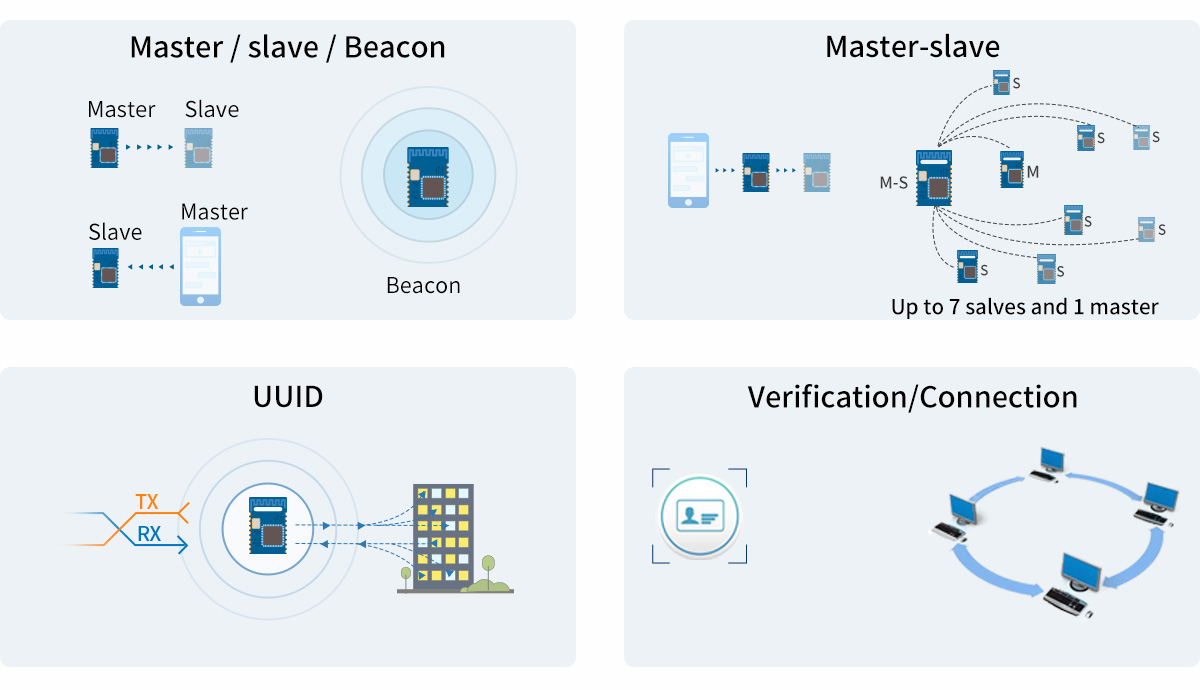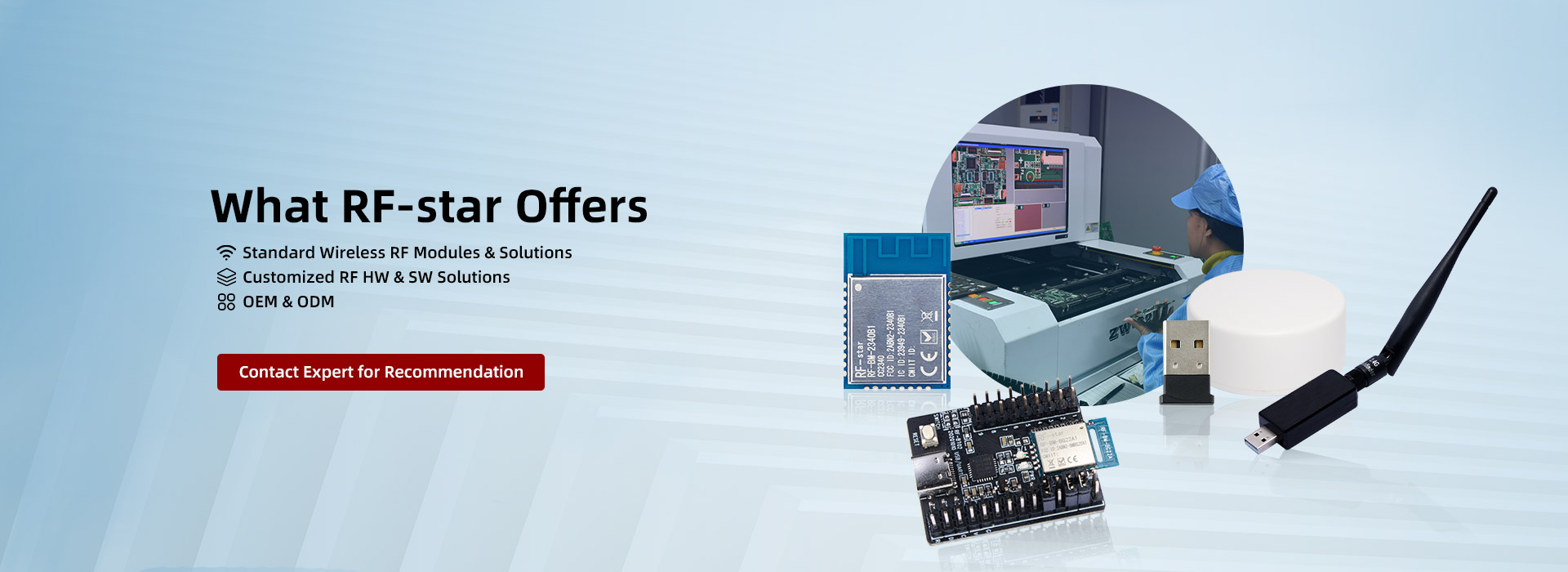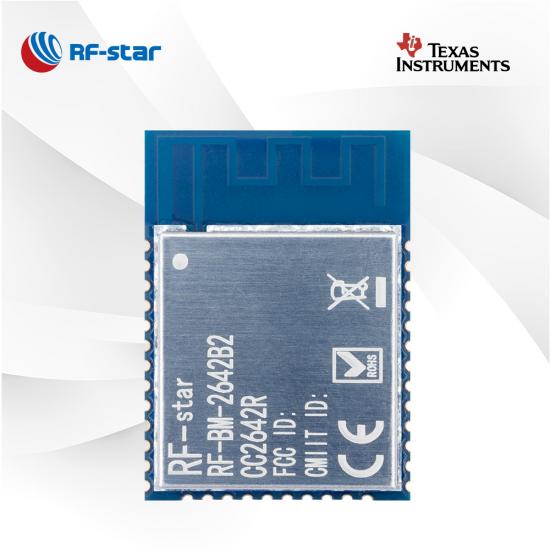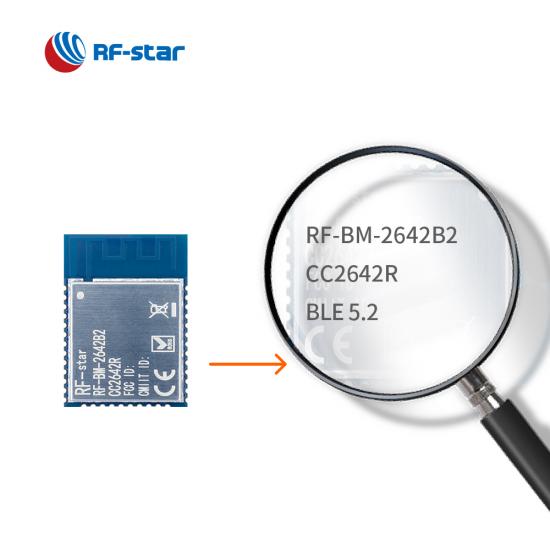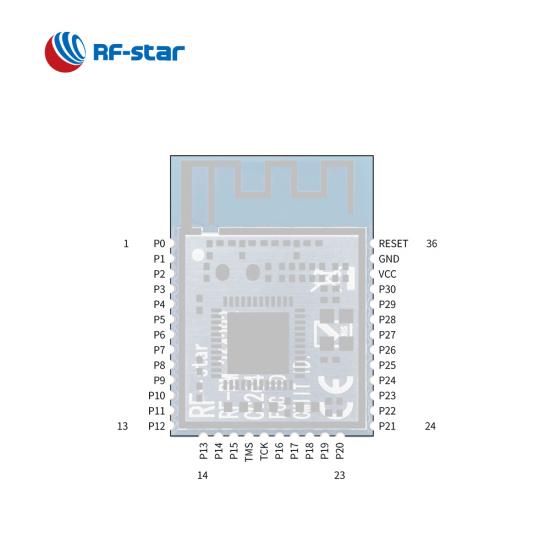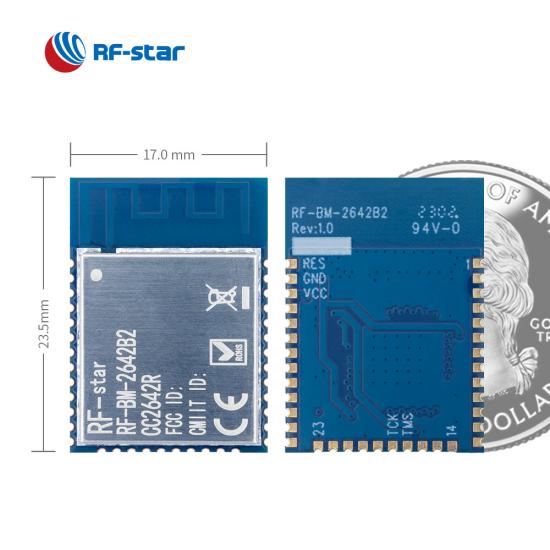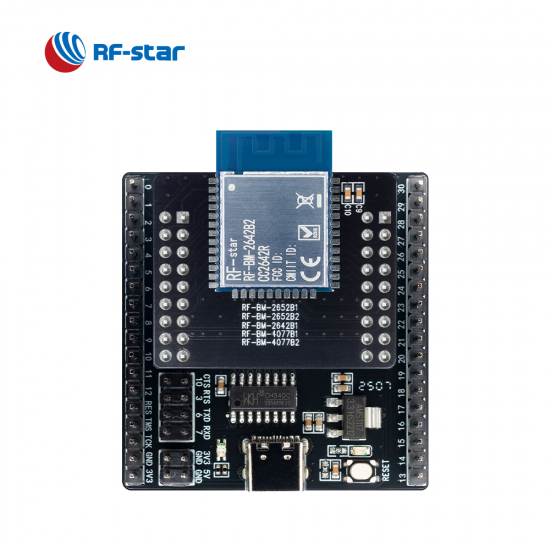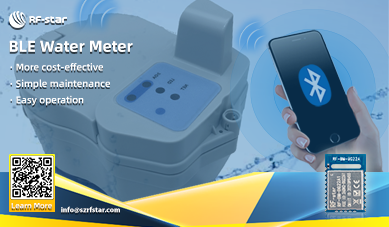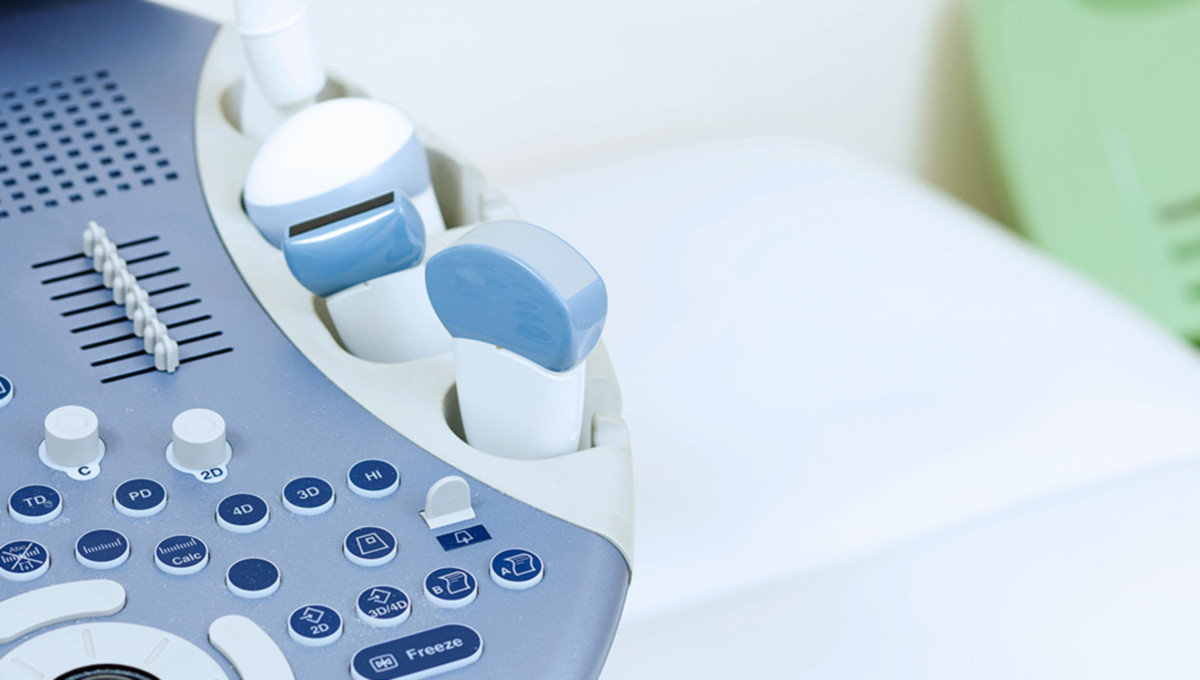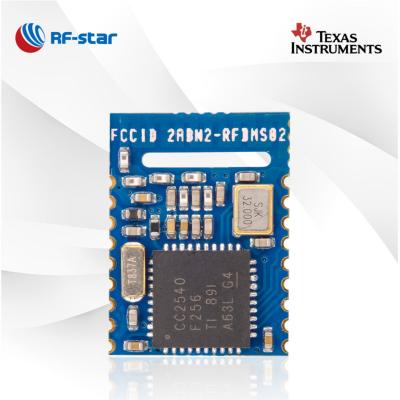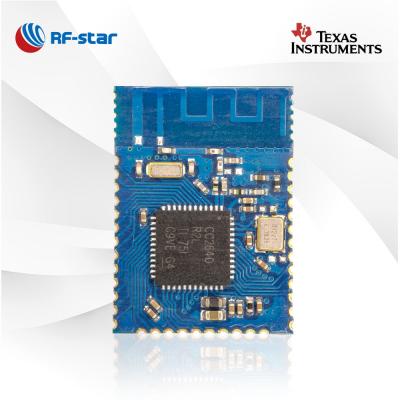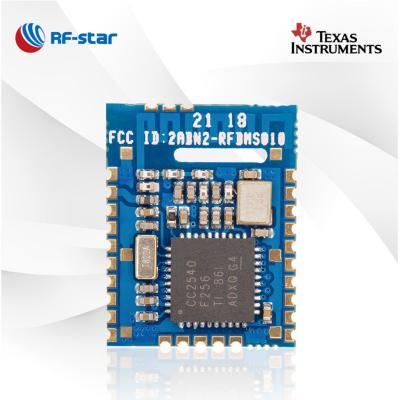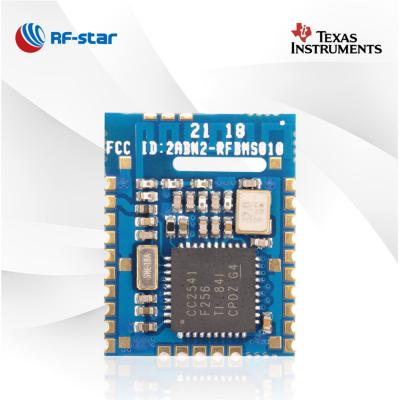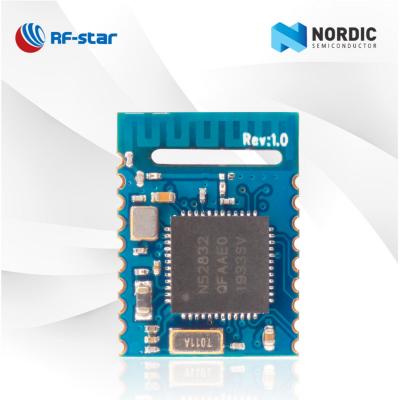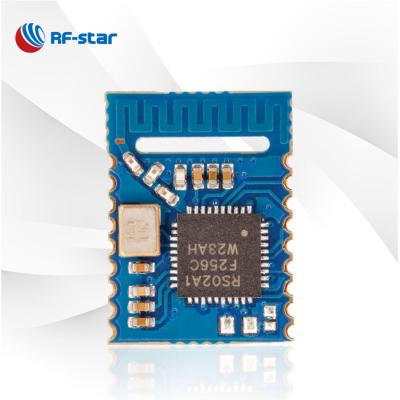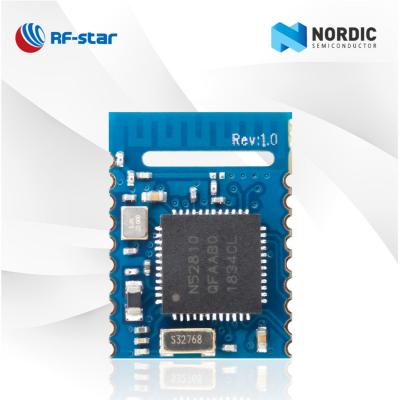|
BLE-Module der Serie CC264x von TI
|
|
Artikelnummer
|
RF-BM-2642QB1I
|
RF-BM-2642B1
|
RF-BM-2642B2
|
RF-BM-4055B1L
|
RF-BM-4077B1L
|
RF-BM-4077B1
|
RF-BM-4044B5
|
RF-BM-4044B4
|
RF-BM-4044B3
|
RF-BM-4044B2
|
|
Foto
|
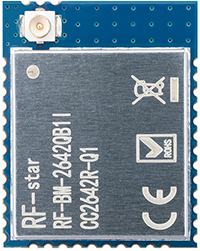
|
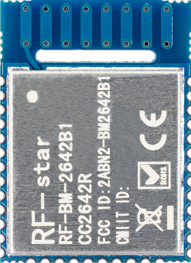
|
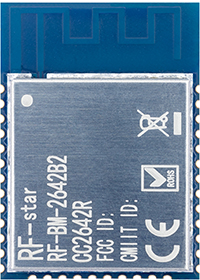
|
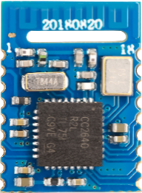
|
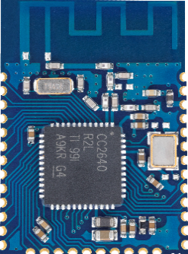
|

|
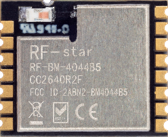
|
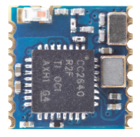
|

|
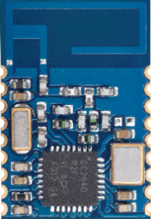
|
|
IC
|
CC2642R-Q1
|
CC2642R
|
CC2642R
|
CC2640R2LRHB
|
CC2640R2LRGZ
|
CC2640R2FRGZ
|
CC2640R2FRSM
|
CC2640R2FRSM
|
CC2640R2FRSM
|
CC2640R2FRSM
|
|
Kern
|
48 MHz ARM® Cortex®-M4F
|
48 MHz ARM® Cortex®-M4F
|
48 MHz ARM® Cortex®-M4F
|
48 MHz ARM® Cortex®-M3
|
48 MHz ARM® Cortex®-M3
|
48 MHz ARM® Cortex®-M3
|
48 MHz ARM® Cortex®-M3
|
48 MHz ARM® Cortex®-M3
|
48 MHz ARM® Cortex®-M3
|
48 MHz ARM® Cortex®-M3
|
|
Antenne
|
IPEX
|
Leiterplatte
|
Leiterplatte
|
Leiterplatte
|
Leiterplatte
|
Leiterplatte
|
Chip/Halbloch-Schnittstelle
|
Chip/Halbloch-Schnittstelle
|
IPEX
|
Leiterplatte
|
|
RAM
|
88 KB
|
88 KB
|
88 KB
|
28 KB
|
28 KB
|
28 KB
|
28 KB
|
28 KB
|
28 KB
|
28 KB
|
|
Blitz
|
352 KB
|
352 KB
|
352 KB
|
128 KB
|
128 KB
|
128 KB
|
128 KB
|
128 KB
|
128 KB
|
128 KB
|
|
Protokolle
|
BLE5.2
|
BLE5.2
|
BLE5.2
|
BLE5.3
|
BLE5.3
|
BLE5.3
|
BLE5.3
|
BLE5.3
|
BLE5.3
|
BLE5.3
|
|
Stromversorgung
|
1,8 V ~ 3,63 V, empfohlen bis 3,3 V
|
1,8 V ~ 3,8 V, empfohlen bis 3,3 V
|
1,8 V ~ 3,8 V, empfohlen bis 3,3 V
|
1,8 V ~ 3,8 V, empfohlen bis 3,3 V
|
1,8 V ~ 3,8 V, empfohlen bis 3,3 V
|
1,8 V ~ 3,8 V, empfohlen bis 3,3 V
|
1,8 V ~ 3,8 V, empfohlen bis 3,3 V
|
1,8 V ~ 3,8 V, empfohlen bis 3,3 V
|
1,8 V ~ 3,8 V, empfohlen bis 3,3 V
|
1,8 V ~ 3,8 V, empfohlen bis 3,3 V
|
|
Frequenz
|
2,4 GHz
|
2,4 GHz
|
2,4 GHz
|
2,4 GHz
|
2,4 GHz
|
2,4 GHz
|
2,4 GHz
|
2,4 GHz
|
2,4 GHz
|
2,4 GHz
|
|
Max. TX-Leistung
|
+5 dBm
|
+5 dBm
|
+5 dBm
|
+5 dBm
|
+5 dBm
|
+5 dBm
|
+2 dBm
|
+2 dBm
|
+2 dBm
|
+2 dBm
|
|
Empfangsempfindlichkeit
|
-97 dBm bei BLE 1M PHY -105 dBm bei 125 kbps LE-codierter PHY
|
-97 dBm bei BLE 1M PHY -105 dBm bei 125 kbps LE-codierter PHY
|
-97 dBm bei BLE 1M PHY -105 dBm bei 125 kbps LE-codierter PHY
|
-97 dBm bei BLE 1M PHY -103 dBm bei 125 kbps LE-codierter PHY
|
-97 dBm bei BLE 1M PHY -103 dBm bei 125 kbps LE-codierter PHY
|
-97 dBm bei BLE 1M PHY -103 dBm bei 125 kbps LE-codierter PHY
|
-97 dBm bei BLE 1M PHY -103 dBm bei 125 kbps LE-codierter PHY
|
-97 dBm bei BLE 1M PHY -103 dBm bei 125 kbps LE-codierter PHY
|
-97 dBm bei BLE 1M PHY -103 dBm bei 125 kbps LE-codierter PHY
|
-97 dBm bei BLE 1M PHY -103 dBm bei 125 kbps LE-codierter PHY
|
|
GPIO
|
31
|
31
|
31
|
13
|
31
|
31
|
10
|
10
|
10
|
10
|
|
Arbeitstemperatur
|
-40 ℃ ~ +125 ℃
|
-40 ℃ ~ +85 ℃
|
-40 ℃ ~ +85 ℃
|
-40 ℃ ~ +85 ℃
|
-40 ℃ ~ +85 ℃
|
-40 ℃ ~ +85 ℃
|
-40 ℃ ~ +85 ℃
|
-40 ℃ ~ +85 ℃
|
-40 ℃ ~ +85 ℃
|
-40 ℃ ~ +85 ℃
|
|
Lagertemperatur
|
-40 ℃ ~ +125 ℃
|
-40 ℃ ~ +125 ℃
|
-40 ℃ ~ +125 ℃
|
-40 ℃ ~ +125 ℃
|
-40 ℃ ~ +125 ℃
|
-40 ℃ ~ +125 ℃
|
-40 ℃ ~ +125 ℃
|
-40 ℃ ~ +125 ℃
|
-40 ℃ ~ +125 ℃
|
-40 ℃ ~ +125 ℃
|
|
Übertragungsreichweite
|
200 m bei 1M PHY, 300 m bei LE-codiertem PHY
|
110 m bei 1M PHY 160 m bei LE-codiertem PHY
|
140 m bei 1M PHY 255 m bei LE-codiertem PHY
|
60 m bei 1M PHY, 90 m bei LE-codiertem PHY
|
70 m bei 1M PHY 100 m bei LE-codiertem PHY
|
80 m bei 1M PHY 110 m bei LE-codiertem PHY
|
Chipantenne 30 m bei 1M PHY, 60 m bei LE-codiertem PHY
|
Chipantenne 20 m bei 1M PHY, 50 m bei LE-codiertem PHY
|
Externe PCB-Antenne 110 m bei 1M PHY, 150 m bei LE-codiertem PHY
|
60 m bei 1M PHY, 90 m bei LE-codiertem PHY
|
|
Abmessung (mm)
|
21,5 x 17,0 x 2,2
|
23,5 x 17,0 x 2,2
|
23,5 x 17,0 x 2,2
|
15,2 x 11,2 x 1,7
|
23,5 x 17,0 x 1,7
|
23,5 x 17,0 x 1,7
|
10,5 x 8,5 x 2,0
|
8,0 x 8,0 x 1,5
|
15,2 x 11,2 x 2,1
|
16,6 x 11,2 x 1,7
|
|
Paket
|
Halbloch mit 1,27 mm Rastermaß
|
Halbloch mit 1,27 mm Rastermaß
|
Halbloch mit 1,27 mm Rastermaß
|
Halbloch mit 1,27 mm Rastermaß
|
Halbloch mit 1,27 mm Rastermaß
|
Halbloch mit 1,27 mm Rastermaß
|
Halbloch mit 1,27 mm Rastermaß
|
Halbloch mit 1,27 mm Rastermaß
|
Halbloch mit 1,27 mm Rastermaß
|
Halbloch mit 1,27 mm Rastermaß
|
|
OTA
|
√
|
√
|
√
|
√
|
√
|
√
|
√
|
√
|
√
|
√
|
|
Bluetooth Mesh
|
√
|
√
|
×
|
×
|
×
|
×
|
×
|
×
|
×
|
×
|
|
Langstrecken
|
√
|
√
|
√
|
√
|
√
|
√
|
√
|
√
|
√
|
√
|
|
2 MBit/s PHY
|
√
|
√
|
√
|
√
|
√
|
√
|
√
|
√
|
√
|
√
|
|
AoA/AoD
|
√
|
√
|
√
|
×
|
×
|
√
|
√
|
√
|
√
|
√
|
|
UART-Protokoll
|
Master-Slave gleichzeitig
|
Master-Slave gleichzeitig
|
Master-Slave gleichzeitig
|
Meister/Sklave
|
Meister/Sklave
|
Meister/Sklave
|
Meister/Sklave
|
Meister/Sklave
|
Meister/Sklave
|
Meister/Sklave
|
|
Funktionen
|
AEC-Q100-Klasse
|
Hohe Anti-Interferenz-Leistung
|
Hohe Anti-Interferenz-Leistung
|
Hohe Kosteneffizienz
|
Hohe Kosteneffizienz
|
31 GPIOs für mehr verfügbare Anwendungen
|
Kleine Abmessungen, doppelseitige Polster
|
Ultrakleine Abmessungen
|
Für externe Antennen machbar
|
Hohe Stabilität
|
